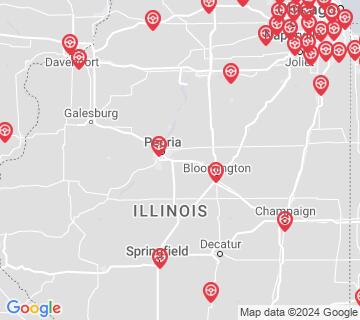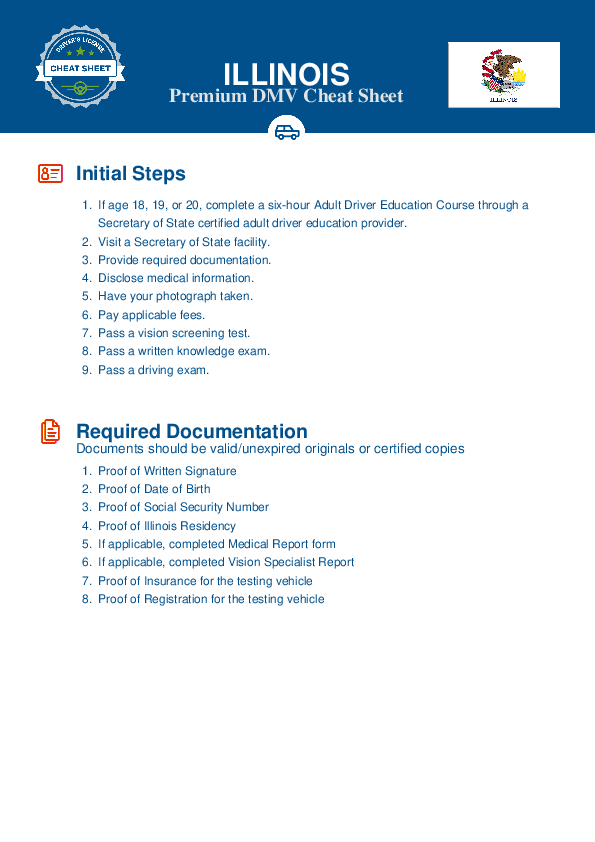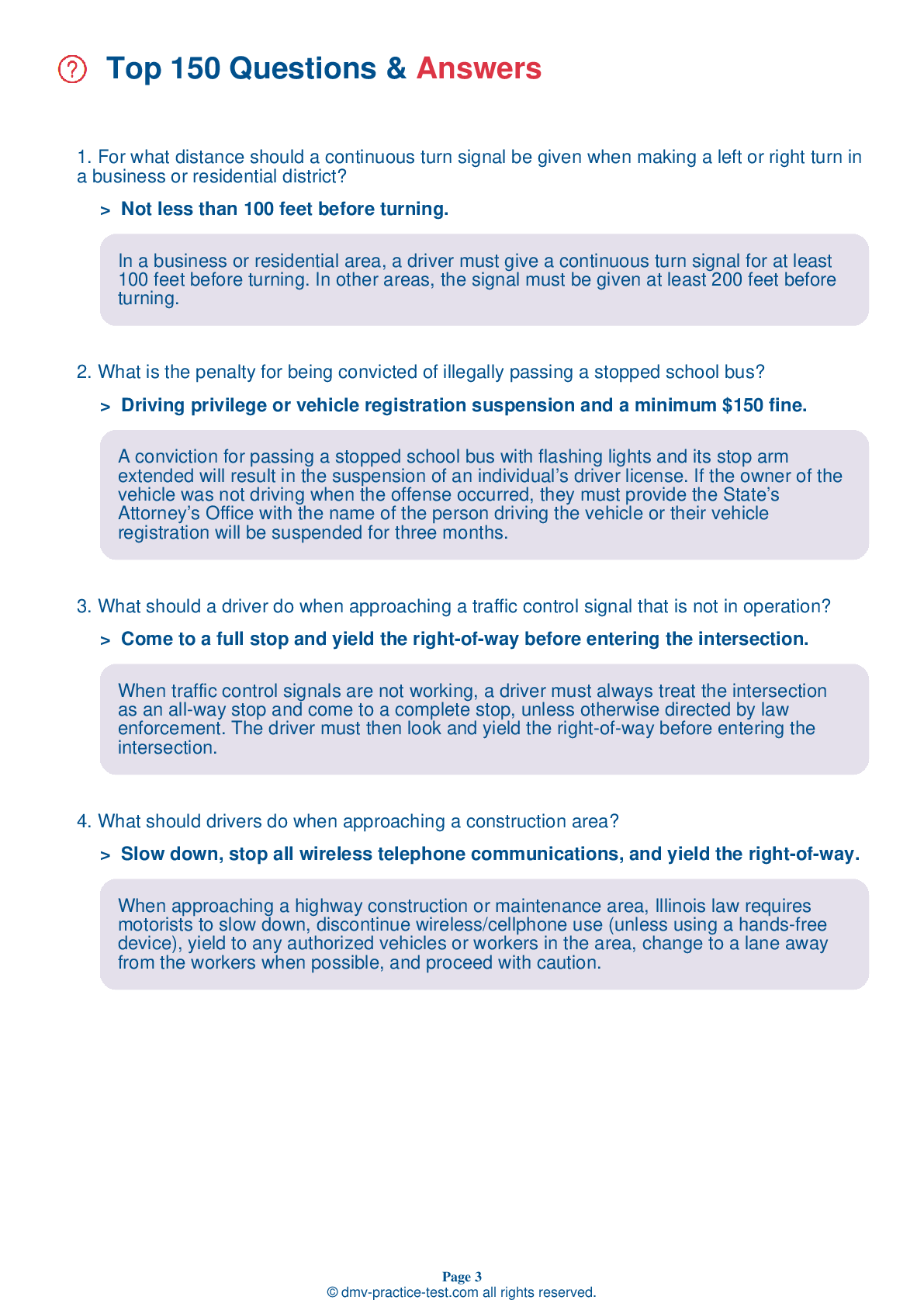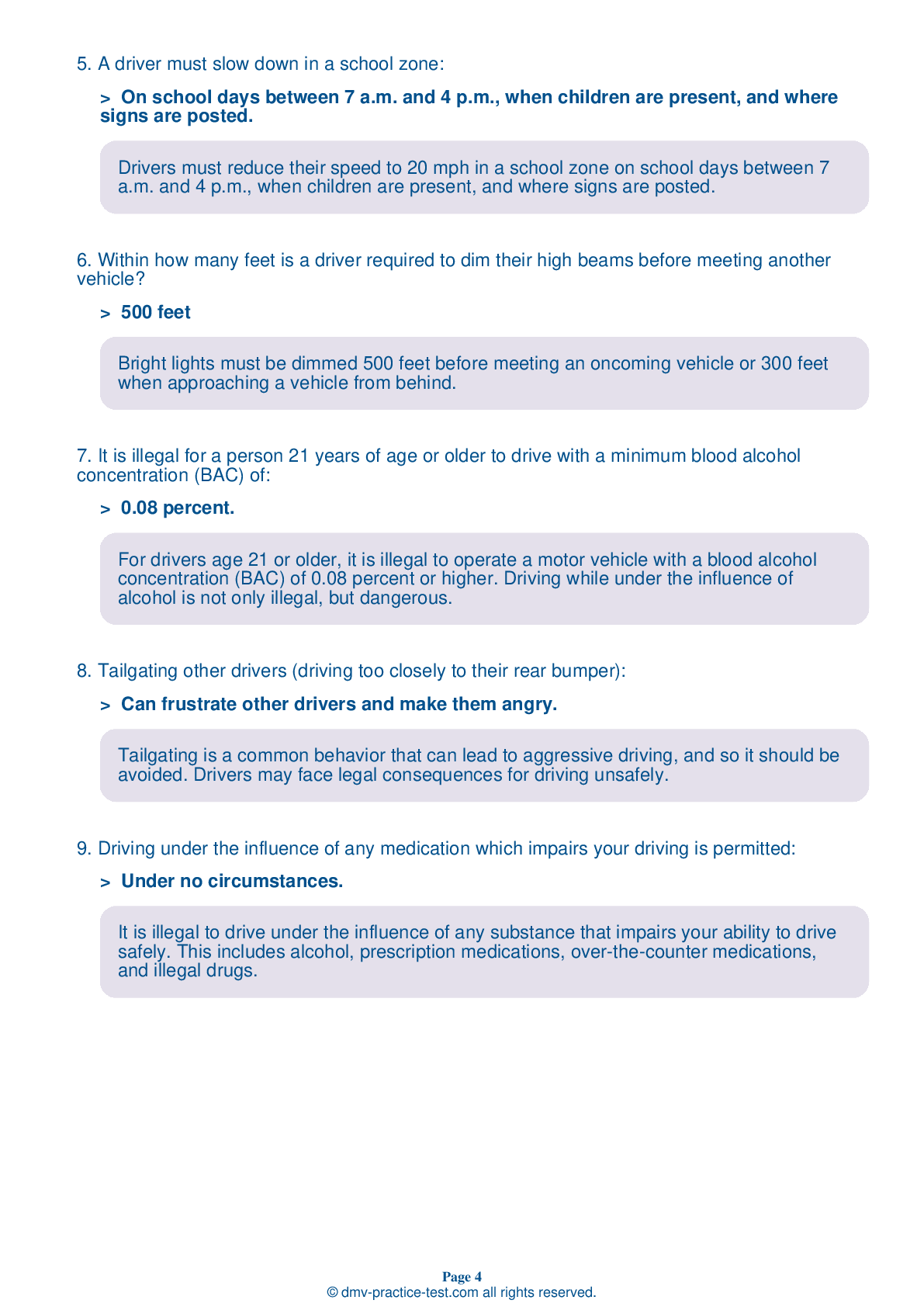FREE Illinois DMV Practice Test #16
For January 2025, this set of Illinois DMV practise tests has been updated. It includes questions based on the most important traffic signs and rules for 2025 from the Illinois Driver Handbook. To study for the DMV driving permit test and driver's licence exam, use actual questions that are very similar (often identical!) to the DMV driving permit test and driver's licence exam.
Each question on the practise exam has a tip and explanation to help you recall the ideas. Questions about traffic rules, traffic signs, and driving statutes, as well as information from the Driver Handbook, will be included in the written portion of the official DMV test.
You must properly answer 38 of the 35 questions to receive a passing mark. To help you prepare for your Illinois instruction permit or driver's licence, take our DMV practise test.
The DMV exam is offered in a variety of languages.
Using any form of testing help will result in an automatic fail, and the DMV may take further action against your driver's licence, so avoid it.
1 . A broken yellow line beside a solid yellow line indicates that passing is:
When the center of the road is marked by a solid yellow line beside a broken yellow line, passing is permitted from the side next to the broken line and prohibited from the side next to the solid line.
2 . This road sign means:
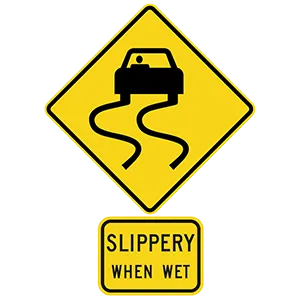
Warning signs are usually yellow with black markings. This sign warns drivers that the roadway will be slippery when wet and they should reduce their speed accordingly.
3 . When changing lanes:
Before changing lanes, you should check your side mirrors and look over your shoulder to make sure it is safe to proceed.
4 . When approaching an intersection controlled by a flashing yellow light, you must:
A traffic signal displaying a flashing yellow light indicates that you should be alert and proceed with caution. Slow down when approaching a flashing yellow traffic signal.
5 . Before a driver can regain driving privileges after losing them for failure to pay damages caused by a crash, the driver must file proof of financial responsibility with the Secretary of State’s office.
Drivers without liability insurance who are at fault in a crash that results in injury, death, or property damage must provide a guarantee of payment to the Secretary of State's office. Failure to post this security may result in suspension of their license.
6 . If your vehicle has a mechanical problem:
If your vehicle breaks down on a highway, make sure other drivers can see it. Get your vehicle off the road and away from traffic if at all possible and turn on your emergency flashers to show that you are having trouble.
7 . When preparing to make a left turn from a two-way street, you should drive:
When you are turning left from a two-way street, begin in the lane closest to the centerline and start your turn just before the front of your car reaches the center of the intersection. Do not cut the corner. Steering hand-over-hand, turn into the first available legal lane.
8 . It is illegal for persons under age 21 to drive with any trace of alcohol or drugs in their system.
It is illegal for anyone to operate a motor vehicle on Illinois highways with any trace of a controlled drug, substance, or intoxicating compound in the blood. Drivers under age 21 will have their driving privileges suspended for three months if they are found to have had any trace of alcohol in their system after being stopped and issued a citation for a traffic violation.
9 . This sign means:
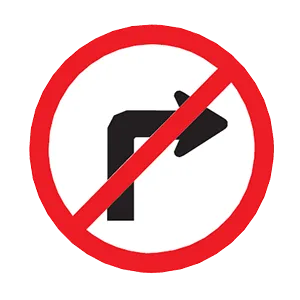
This sign prohibits right turns. You cannot make a right turn at an intersection where this sign is posted.
10 . This sign means:

